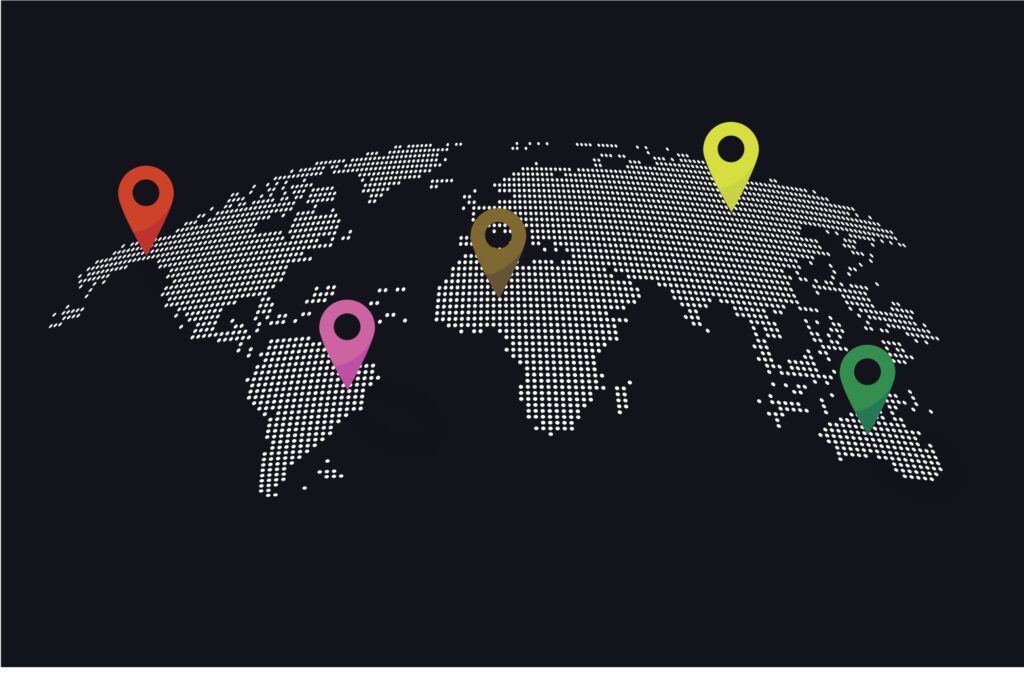WORK VISA
"Choose a job you love, and you will never have to work a day in your life." - Confucius
The process of obtaining a work visa can be complex and time-consuming, typically involving several steps and requirements. While the specific process can vary depending on the country and type of work visa, here is a general overview of what itentails:
Research and Eligibility: Start by researching the work visa options available in the country where you intend to work. Understand the eligibility criteria, including educational qualifications, skills, work visa experience, and language proficiency requirements. Ensure that you meet the criteria before proceeding for work visa .
Employer Sponsorship: In most cases, you will need a job offer from an employer in the destination country. The employer may need to fulfill certain obligations, such as proving that the position cannot be filled by a local candidate and providing documentation supporting your employment.
Gathering Documentation: Prepare the necessary documents required for the work visa application. This typically includes a valid passport, educational certificates, employment contracts, reference letters, and sometimes a police clearance certificate or medical examination report. It’s important to check the specific requirements of the country where you plan to work visa.
Application Submission: Submit your work visa application along with the required documents to the appropriate immigration authorities. This can typically be done either online or through a physical application at the consulate or embassy. Pay the application fees, if applicable, and ensure that all forms are completed accurately and thoroughly.
Processing and Waiting Period: The immigration authorities will review your application, conduct background checks, and verify the information provided. The processing time can vary significantly, ranging from a few weeks to several months, depending on the country and the complexity of your case. During this waiting period, it’s important to be patient and avoid making any travel plans until you receive a decision.
Interview or Biometric Appointment: Some countries may require an interview or biometric data collection as part of the visa application process. Prepare for any interviews by familiarizing yourself with the job offer, the company, and being ready to answer questions about your qualifications and intentions to work in the country.
Decision and Notification: Once a decision has been made on your work visa application, you will be notified of the outcome. If approved, you will receive instructions on how to proceed, which may include collecting your visa from the consulate or embassy or receiving an electronic visa.
Visa Issuance and Travel Preparation: If your work visa is approved, you will need to follow the instructions provided to obtain the actual visa. This may involve submitting additional documents, paying visa fees, and attending an appointment. Once you have your work visa, you can make travel arrangements and prepare for your move to the destination country.
Compliance and Renewal: Upon arrival in the destination country, it’s important to comply with the regulations and conditions of your work visa. This includes abiding by the terms of your employment, adhering to local laws and regulations, and ensuring timely renewal or extension of your visa as required.

THE TOP 20 BEST COUNTRIES TO WORK IN
Do you believe you work in the best country in the world? Consider again when we discover which country is truly the finest to work in (hint: the United States does not make the cut!).
Workers are under pressure to retain their comfortable lifestyles in the face of the current cost of living problem. The expense of living is rising, while wages are remaining largely flat. In fact, worldwide inflation has pushed the Consumer Price Index for All Urban Consumers up by 8.6% in the last year, but wages have only climbed by 5.2% during the same period.
Despite compensation increases across the country in response to the substantial rise in inflation, a gap exists between the cost of living and the bulk of employees’ annual incomes. This prompted us to explore if the United States is truly one of the best places to work, or whether relocating overseas would bring greater workplace advantages and higher pay. As it turned out, the United States did not make the cut. It came in last place due to weak job perks in comparison to the majority of European countries and a high cost of living.
Luxembourg, it turns out, is the best place to live for the best work-life balance. The European economic powerhouse famous for its award-winning wines gives the best opportunity for employees to live well, with an average salary of $81,110 and the most generous statutory sick time policy at 89 weeks on 100% pay. The Netherlands, with its flat landscape of canals and tulip fields and legendary bicycle routes, has been named the second best country in the world to work in, regardless of profession. The country came in third place. This is due to its good statutory sick pay benefits (104 weeks at 70% of salary) and an employment rate of 80.1%.
Norway rounds out the top three, with the shortest standard working hours of any country studied, at only 33.4 hours per week, allowing employees to spend more time with family and friends. Employees in Norway can enjoy their time away from work thanks to a generous pay of $84,090, the third highest average salary in our analysis.
While Bermuda, off the East Coast of the United States, has the highest average pay of any country in the world, at $116,540, it also has the highest cost of living. The British overseas territory receives a score of 141.74 on the Cost Of Living Index, making it 40% more expensive to live in than New York City. Despite failing to enter the top 10, Switzerland has the highest yearly wages for high-ranking positions in a variety of professions. High-level healthcare professionals may expect to earn an annual salary of $195,465.
Those working in finance might earn $271,360 per year. Education professionals could make up to $234,260 per year.
However, the alpine country fell short of making the top ten. This was due to insufficient paternity leave policies and the high expense of living. The country placed second in terms of living costs. It placed second only to Bermuda, with a cost of living that is 10% more than in New York City.
Despite having the sixth highest average wage, the United States did not make the cut. The United States provides less workplace perks than many European countries. This, combined with high living costs and increased unemployment rates, pushed it to the bottom of the overall list.
Our analysts conducted this study by looking at the 20 countries with the greatest GDP per capita. These countries were graded based on a variety of workplace-related characteristics.
How to Apply for a Work Visa - Step-by-Step Instructions
Obtaining a work visa can be a lengthy procedure, with multiple processes required before, during, and after the visa application.
Before Applying for a VisaBefore applying for a work visa, a foreign national and their potential employer must meet three prerequisites. If they do not meet all three requirements, their visa application may be denied.
Job Opportunity. A foreign national who intends to work temporarily in the United States must first apply for and be offered a job in the United States.
Employer petition. When a foreign national is offered a job, the potential employer is required to file a petition on their behalf. Employers must file a Nonimmigrant Worker Petition with the USCIS. A person cannot even begin the application procedure for a work visa without an authorised petition. Even if the petition is approved,
Department of Labour approval. Before submitting a petition for any of the following work visas, the employer must get a certificate from the DOL:
H-1B
H-1B1
H-2A
H-2B
The Visa Application Procedure
The foreign national can begin the visa application procedure after meeting the aforementioned requirements and receiving an accepted petition from USCIS. The following actions must be taken by the applicant:
Form DS-160, Online Nonimmigrant Visa Application, must be completed by the applicant. All information entered must be true and correct. While the application is available in several languages, all responses must be written in English. After completing and submitting this form, the confirmation page must be printed.
Schedule an Interview: After applying, the applicant must schedule an interview at a US Embassy in their home country. To schedule an interview, applicants must have their approved petition receipt number. Appointment wait times differ by country.
Prepare for the Interview: In order to have a successful interview, you must first prepare. Before the interview, applicants must pay the non-refundable visa application cost. They must also acquire the necessary papers for the interview. Additional papers may be required depending on the applicant’s home country. Applicants should check the website of the embassy or consulate to ensure they have all essential documents. Documents required include:
A valid passport is required.
Page Confirmation of Nonimmigrant Visa Application
Receipt for application fee payment
Passport photo that complies with the rules
Petition receipt number has been approved.
Attend the Interview: The applicant will meet with a consulate officer during the interview. The officer will analyse the application and interview the applicant. It is critical to be truthful and detailed in your responses to these questions. Officers are trained to identify deceit and will deny a visa application if they believe the petitioner is lying.
Applicants must demonstrate that they have strong ties to their native country and intend to return after the temporary US visa expires. These connections may include:
Having a home in their home country that they intend to return to
Strong links to their homeland and family relationships
The financial situation
Long-term objectives
The applicant’s fingerprints will be obtained during this interview, and if the If the visa is granted, the applicant may pay a visa insurance charge.

